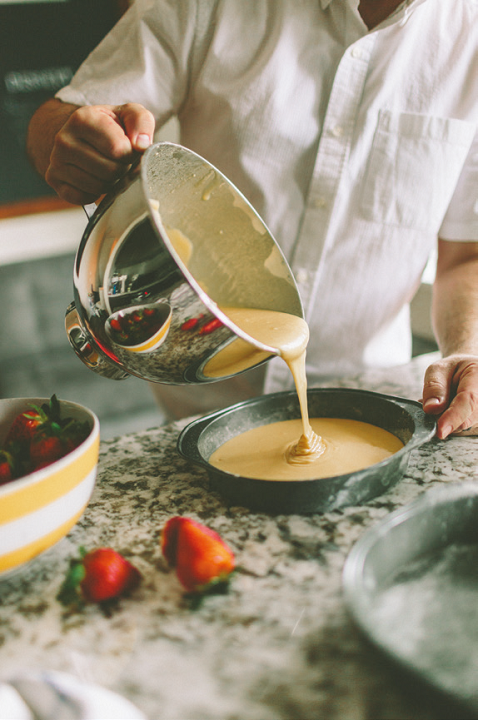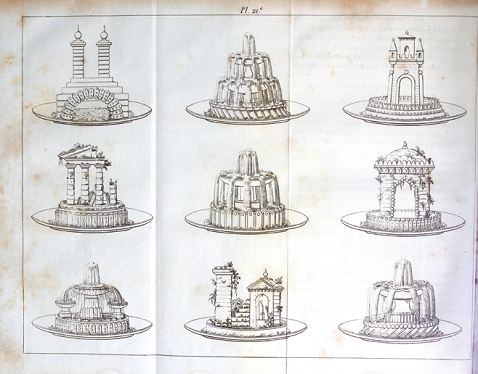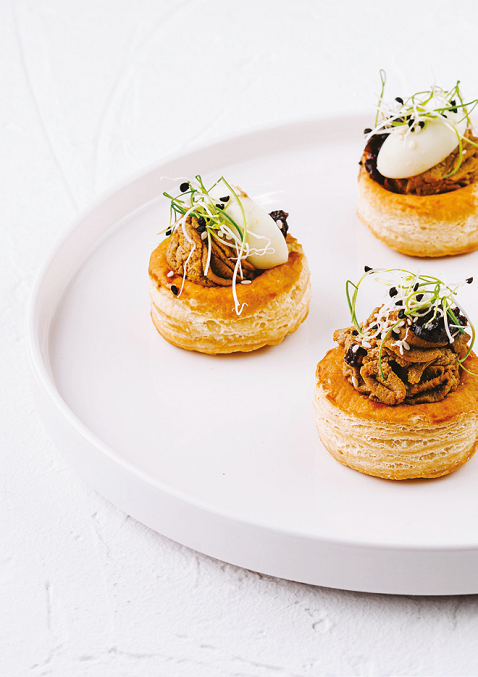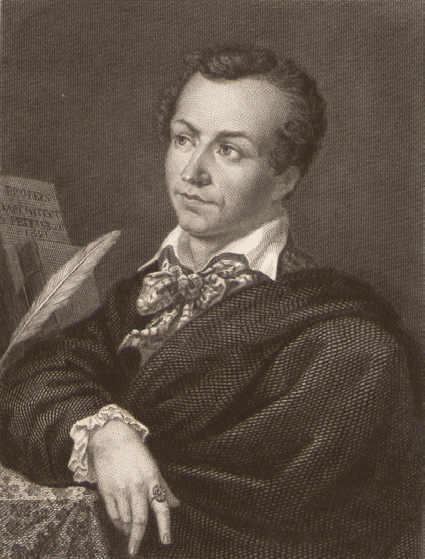Listen to the audio version of this article. Duration: 7 minutes.
In this article, we celebrate the remarkable figure of Antonin Carême, the 19th century’s culinary mastermind and a forerunner of modern food design. From his legendary vol-au-vent to the elegant diplomate cake, Carême’s legacy transcends centuries, inspiring chefs and designers alike. His intuitive understanding of food as both an art and a science laid the foundation for much of what we recognise today as haute cuisine and food aesthetics.

Antonin Carême, the “King of Chefs and Chef of Kings,” didn’t just cook food, he designed it, structured it, and ensured it was as impressive to the eye as it was to the palate. Born into poverty in 1784 in Paris, Carême’s culinary genius propelled him from the streets to the gilded kitchens of European royalty. He served Napoleon’s former diplomat Talleyrand, Tsar Alexander I, and even England’s King George IV, creating dishes that dazzled their taste buds and stirred their imaginations. If there’s one chef who understood that food could be both delicious and visually stunning, it was Carême, perhaps the first true “food designer.”

Culinary architecture
Carême’s approach to food was as meticulous as it was creative. He didn’t just plate dishes; he constructed them like one would design a building. His towering pièces montées, elaborate centrepieces made from sugar and pastry, were modelled after Greek temples and columns, merging the worlds of architecture and gastronomy. But Carême wasn’t just about show; he also organised the chaotic world of French sauces, creating the four “mother sauces”, - béchamel, velouté, espagnole, and allemande - a culinary cornerstone that remains essential in kitchens today.
Carême also revolutionised the way meals were served with service à la russe, the idea that dishes should be served one at a time, rather than all at once. This method wasn’t just practical; it allowed diners to savour each course, elevating the dining experience, a precursor to the tasting menu we know today.
A puff pastry that took flight
While the vol-au-vent was technically around before Carême, it was he who perfected this now iconic puff pastry. The idea was to create something so light and flaky that it could “fly in the wind”, hence its name. Carême’s genius lay in crafting a lighter, crispier version of puff pastry, turning the vol-au-vent into a versatile and enduring dish. Whether filled with savoury meats or rich seafood, the vol-au-vent became a sensation, and it’s still a staple of elegant French cuisine today.

A dessert fit for diplomats
The diplomate cake was born out of necessity, but as with many of Carême’s creations, it became an enduring classic. At the Congress of Vienna in 1815, a historic moment following Napoleon’s defeat, Talleyrand, ever the shrewd diplomat, called upon Carême to create a dish that would soothe the weary politicians. Carême observed that discussions dragged on so long, no one had time to eat. His solution? A cold dessert that could be enjoyed at any hour, requiring no preparation before serving. Thus, the diplomate cake was born: layers of sponge cake soaked in Grand Marnier or Kirsch, custard, and candied fruit. It became an instant success, sweetening negotiations and, quite literally, diplomacy. Today, 200 years later, le diplomate still adorns the windows of patisseries from Vienna to Paris.
Carême’s modern legacy
Beyond his aesthetic prowess, Carême understood the science of cooking. He was one of the first chefs to introduce precise measurements into recipes, ensuring consistency, a practice still essential in today’s kitchens. In addition, Carême’s lightened sauces and balance of flavours prefigured the health-conscious approach to cooking that modern chefs champion today. He wasn’t just about opulence; he was also about refinement and innovation. Also, in the 18th and 19th centuries, outdoor feasts and picnics became popular among the elite, and Carême’s portable creations, like the vol-au-vent, were ideal for these settings. His lighter sauces and simplified techniques made elegant food easier to manage and serve, reflecting the growing trend of refined outdoor dining experiences. Carême’s work, blending sophistication with practicality, foreshadowed modern approaches to outdoor cooking.
Design pioneer and culinary genius
Carême didn’t just cook food; he designed experiences. His pièces montées were the precursor to today’s food installations, and his eye for detail made food presentation an integral part of the dining experience. Long before “food design” was a term, Carême was shaping the future of culinary aesthetics. As Carême famously said, “Cuisine is the architecture of taste.” His idea that food should be as pleasing to look at as it is to eat set the stage for the modern food designer, making his work not only relevant but inspirational to chefs and designers alike.

Bio
Antonin Carême (1784–1833) was a French chef and ante litteram food designer, widely regarded as the founder of haute cuisine. Known for serving European royalty and for his intricate pièces montées, Carême revolutionised French gastronomy with his creation of the four mother sauces, his refinement of the vol-au-vent, and the invention of the diplomate cake. His culinary legacy continues to influence chefs today, as he laid the groundwork for modern food design and the scientific approach to cooking.
Copyright © Homa 2025
All rights reserved

.jpg?VGhlIFBlcmZlY3QgU2xvdC1pbijmraPnoa4pLmpwZw==)

































